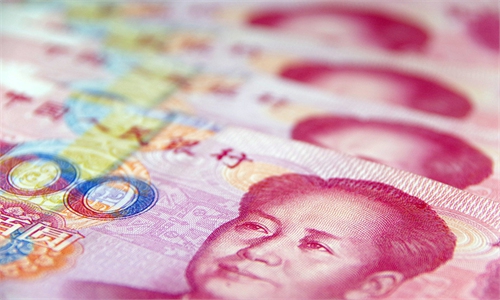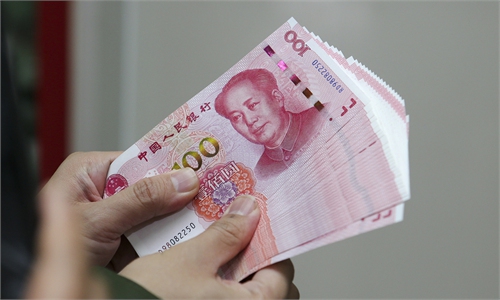
Chinese yuan Photo:VCG
Use of the Chinese yuan jumped to 4.61 percent of global payments in November, becoming the fourth most active currency for the first time since January 2022 and surpassing the Japanese yen, according to data from global payment services provider Society for Worldwide Interbank Financial Telecommunication (SWIFT) on Thursday (EU time).
The share of the yuan in global payments jumped from 3.6 percent in October and was the first time since January 2022 that it reached fourth spot. At that time, the yuan's share stood at 3.2 percent, according to SWIFT.
Overall, RMB payments value increased by 34.87 percent compared to October 2023, compared with a 5.35-percent-increase all payments currencies in general, according to SWIFT.
It mirrors the steady progress in the yuan's internationalization, the growing appeal of the yuan as a currency for global payments and settlements, combined with a bullish view on the long-term development momentum of China's economy, analysts said.
In November, the yuan trailed behind the US dollar, which has a 47-percent-share of global payments. The euro, at 23 percent, and the pound, at 7.15 percent, were the No.2 and No.3 most-traded currencies during the month.
"The rising proportion of yuan's cross-border payments reflects the increasing popularity of yuan in cross-border settlement and payment by various countries, and reflects the confidence of global investors in the long-term development of our country's economy," Zhou Maohua, a macroeconomic analyst at Everbright Bank, told the Global Times on Friday.
Judging from the trend, China is accelerating the construction of a new dual-cycle development pattern, deeply integrating into international markets, as the pace of yuan's internationalization accelerates, Zhou said, noting that the demand for yuan in international reserves, payment and settlement, as well as investment and financing were all increasing.
As more positive factors converge to provide the Chinese yuan a further boost in its value and its role as a safe haven amid a predicted softening of the US dollar, the yuan-based assets are also becoming popular among global investors and asset managers, Zhou said.
Since the beginning of the year, there have been notable developments marking the yuan's internationalization, surpassing the euro to become the second-largest currency in Brazil's foreign exchange reserves, Argentina's first-ever use of the yuan to repay foreign debts, and Pakistan's inaugural payment of Russian crude oil purchases in yuan.
From October to December, the People's Bank of China (PBC), the central bank, has authorized yuan-clearing banks in Pakistan and Cambodia and signed an agreement with central bank of Serbia over the setup of a yuan-clearing bank in the country.
In November, the PBC and the Saudi Central Bank signed a local currency swap agreement that involves 50 billion yuan ($6.98 billion) or 26 billion Saudi riyals.
In China's cross-border transactions for trade in goods, the proportion of yuan settlements reached 24.4 percent in the first nine months, up 7 percentage points from the corresponding period in 2022, data from the PBC showed.
Global Times



